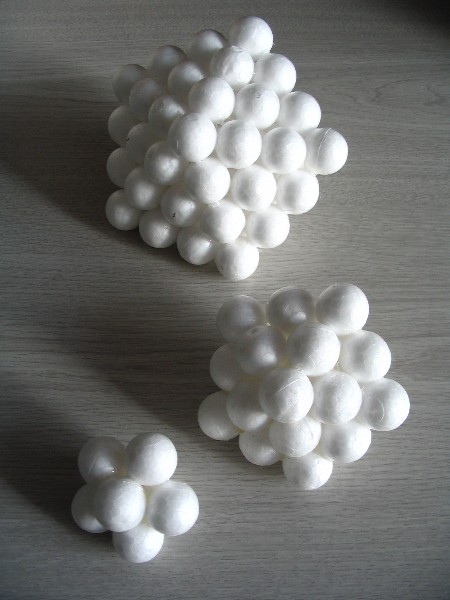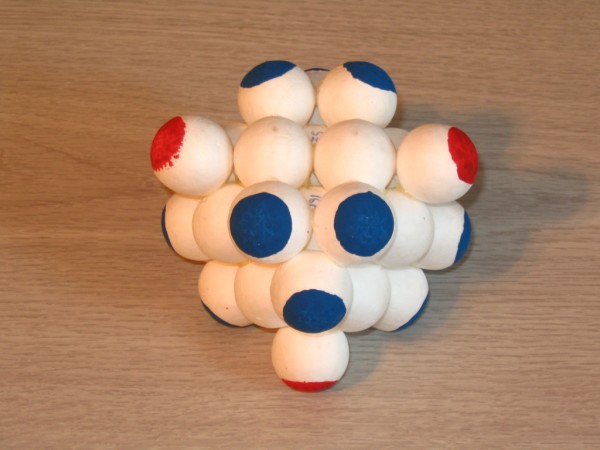
Quantum Vacuum Engineering
QVac Engineering
The term Quantum Vacuum Engineering was evidently first coined by Nobel Laureate, T.D. Lee who suggested that the energetic vacuum of space might some day be engineered to provide fantastic new technologies of science fiction fantasy.
That day is now here, and the QVac Engineering revolution is about to begin in earnest as we finally learn to engineer the all pervasive matter-vacuum interaction to provide fuelless power systems, gravity control, reactionless propulsion, low energy nuclear reactions and much, much more. For a brief introduction to the fundamentals of this revolutionary field of engineering refer to the following short primer.
QVac Engineering Fields
Within the broad field of QVac Engineering the major divisions of conventional "closed system" engineering disciplines are evident, although the lines of distinction between them are frequently blurred due to the more fundamental science involved. These divisions include QVac electrical, mechanical, chemical and nuclear engineering with numerous sub-specialties largely corresponding to conventional engineering. Some of which are listed in the QVE directory in the left margin.
Electrical engineering includes overunity generators, motors, solid state devices, scalar field generators and positronic circuits. Electrostatic means for controlling or neutralizing gravity and inertia is also considered attainable and practical.
Mechanical engineering includes material based inertial and gravity control systems, permanent magnet motors, atomic force engines, hydraulic and pneumatic turbines that utilize complex motion, vortices and other exotic configurations that cause transients in the matter-vacuum energy interaction.
Chemical engineering includes resonance electrolysis cells and other chemical reactions that collect energy from the energetic vacuum primarily at the atomic and molecular level. The production of exotic compounds with engineered valence configurations to produce light weight, ultra-strong materials is also included within this field.
Nuclear engineering applications include deterministic, low energy induced nuclear fusion and cold fission reactions that can be used to neutralize radioactive wastes, produce energy and transform toxic heavy metals into more useful substances.
Scientific Fundamentals
Oddly enough, the underlying scientific fundamentals frequently lag well behind the engineering applications due to the pervasive ignorance of the energetic nature of space, and the refusal to accept this proven fact. Although very well established within Quantum and Stochastic field theory, the Zero-Point energy of the vacuum field is generally still ignored by the majority of mainstream scientists caught in the entrenched thinking of "empty space" closed system analysis popularized by Einstein's Special Relativity.
Characterizing the continuous matter-vacuum interaction in any detail will no doubt occupy scientists and engineers for the next few centuries. The recent development of the highly deterministic Lattice Nested Hydreno atomic model should greatly accelerate this process by paving the way to a far more refined and predictable Quantum theory.
Humanitarian Applications
It is not hard to envision how QVac Engineered systems are the key to bringing the poorest nations of the world up to acceptable, humane standards of living. Micro-infrastructure systems, requiring no conventional fuel source, will bring power, clean water, irrigation, sanitation, working capital and transportation to even the remotest villages in an unprecedented global wave of humanitarian projects.
More advanced nations will eventually follow suit in a massive retrofit of existing fossil and nuclear fuelled infrastructure and technologies despite their present addiction to oil with all its vested interest and technological inertia. Persisting with the greenhouse gas spewing, fossil fuelled economy with all its environmental, social and international security implications is no longer a viable option..... more>
The term Quantum Vacuum Engineering was evidently first coined by Nobel Laureate, T.D. Lee who suggested that the energetic vacuum of space might some day be engineered to provide fantastic new technologies of science fiction fantasy.
That day is now here, and the QVac Engineering revolution is about to begin in earnest as we finally learn to engineer the all pervasive matter-vacuum interaction to provide fuelless power systems, gravity control, reactionless propulsion, low energy nuclear reactions and much, much more. For a brief introduction to the fundamentals of this revolutionary field of engineering refer to the following short primer.
QVac Engineering Fields
Within the broad field of QVac Engineering the major divisions of conventional "closed system" engineering disciplines are evident, although the lines of distinction between them are frequently blurred due to the more fundamental science involved. These divisions include QVac electrical, mechanical, chemical and nuclear engineering with numerous sub-specialties largely corresponding to conventional engineering. Some of which are listed in the QVE directory in the left margin.
Electrical engineering includes overunity generators, motors, solid state devices, scalar field generators and positronic circuits. Electrostatic means for controlling or neutralizing gravity and inertia is also considered attainable and practical.
Mechanical engineering includes material based inertial and gravity control systems, permanent magnet motors, atomic force engines, hydraulic and pneumatic turbines that utilize complex motion, vortices and other exotic configurations that cause transients in the matter-vacuum energy interaction.
Chemical engineering includes resonance electrolysis cells and other chemical reactions that collect energy from the energetic vacuum primarily at the atomic and molecular level. The production of exotic compounds with engineered valence configurations to produce light weight, ultra-strong materials is also included within this field.
Nuclear engineering applications include deterministic, low energy induced nuclear fusion and cold fission reactions that can be used to neutralize radioactive wastes, produce energy and transform toxic heavy metals into more useful substances.
Scientific Fundamentals
Oddly enough, the underlying scientific fundamentals frequently lag well behind the engineering applications due to the pervasive ignorance of the energetic nature of space, and the refusal to accept this proven fact. Although very well established within Quantum and Stochastic field theory, the Zero-Point energy of the vacuum field is generally still ignored by the majority of mainstream scientists caught in the entrenched thinking of "empty space" closed system analysis popularized by Einstein's Special Relativity.
Characterizing the continuous matter-vacuum interaction in any detail will no doubt occupy scientists and engineers for the next few centuries. The recent development of the highly deterministic Lattice Nested Hydreno atomic model should greatly accelerate this process by paving the way to a far more refined and predictable Quantum theory.
Humanitarian Applications
It is not hard to envision how QVac Engineered systems are the key to bringing the poorest nations of the world up to acceptable, humane standards of living. Micro-infrastructure systems, requiring no conventional fuel source, will bring power, clean water, irrigation, sanitation, working capital and transportation to even the remotest villages in an unprecedented global wave of humanitarian projects.
More advanced nations will eventually follow suit in a massive retrofit of existing fossil and nuclear fuelled infrastructure and technologies despite their present addiction to oil with all its vested interest and technological inertia. Persisting with the greenhouse gas spewing, fossil fuelled economy with all its environmental, social and international security implications is no longer a viable option..... more>
Please bare with us while we continue to build and refine our site. New material will be added regularly. Be sure to book mark us and come back soon as we continue to unveil more astounding details of this radically new field of Engineering.
(Updated May 8, 2012)
(Updated May 8, 2012)
The New LNH Atomic Model
The Lattice Nested Hydreno (LNH) Atomic model is a central feature of QVac Engineering.
The LNH model helps to explain and legitimize the development of power sources requiring no material fuel, propulsion systems that do not need a reaction medium, and low energy Nuclear reactions such as the Passive Inertial Confinement, ZIPP fusion process and its variants.
For a brief introduction to the new model visit our companion website.
A preprint ebook of the revolutionary Lattice Nested Hydreno Atomic model has just been released for distribution.
The Lattice Nested Hydreno (LNH) Atomic model is a central feature of QVac Engineering.
The LNH model helps to explain and legitimize the development of power sources requiring no material fuel, propulsion systems that do not need a reaction medium, and low energy Nuclear reactions such as the Passive Inertial Confinement, ZIPP fusion process and its variants.
For a brief introduction to the new model visit our companion website.
A preprint ebook of the revolutionary Lattice Nested Hydreno Atomic model has just been released for distribution.
QVac Engineering Science Assoc.
The Quantum Vacuum Engineering Science Association, QVESA is a new Learned society being set up to promote the development of Quantum Vacuum Engineering and its underlying scientific fundamentals.
Membership will be open to all interested parties within various membership categories including professionals and layman. Watch for further developments in the coming months.
Get your name on our contact list for updates and take an active role in ushering in this unprecedented scientific and engineering reformation and renaissance.
The Quantum Vacuum Engineering Science Association, QVESA is a new Learned society being set up to promote the development of Quantum Vacuum Engineering and its underlying scientific fundamentals.
Membership will be open to all interested parties within various membership categories including professionals and layman. Watch for further developments in the coming months.
Get your name on our contact list for updates and take an active role in ushering in this unprecedented scientific and engineering reformation and renaissance.
QVac Engineered Systems
QVac engineered systems may include almost any conceivable combination of chemical, electrical, mechanical, magnetic, hydraulic or pneumatic device. The one critical requirement is that the system must be forced into non-equilibrium, cyclic transients with the energetic vacuum.
This is usually characterized by the action and reaction forces being thrown out of synchronization in conjunction with various Casimir effects, which draw energy from the local vacuum flux during each cycle.
Dozens of such devices already exist in various states of development - or suppression. For obvious reasons, the "old boy" network of the ailing fossil fuelled economy may find these developments a bit of a disturbing threat to their cash flows.
Nonetheless its way past time we start adopting environmentally friendly technologies.
About The Author
Mark Porringa is a professional engineer and decorated "veteran" of the Nuclear industry including 15 years at a major research reactor.
Frustrated with the growing limitations and indeterminate nature of nuclear science and engineering, he began a ten year personal quest that started with low energy fusion experiments and culminated with the development of a new atomic model with vast implications.
His work has been reported in prestigious journals such as the Annals of the Louis de Broglie Foundation.
Mark Porringa is a professional engineer and decorated "veteran" of the Nuclear industry including 15 years at a major research reactor.
Frustrated with the growing limitations and indeterminate nature of nuclear science and engineering, he began a ten year personal quest that started with low energy fusion experiments and culminated with the development of a new atomic model with vast implications.
His work has been reported in prestigious journals such as the Annals of the Louis de Broglie Foundation.



Argon Atom
Sulfur 32 Nucleus
Neutron Decacores
LNH Atomic
Model
Model
Science & Engineering - Out of the Box

QVE DIRECTORY
Updated Dec 2011
Cadmium Nucleus
© 2006 - 2012 Mark Porringa

































